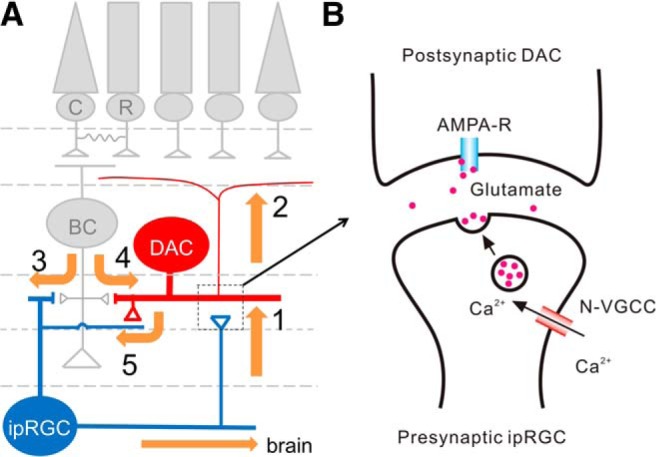Figure 10.

Proposed neural pathways and synaptic mechanisms underlying ipRGC influence on light adaptation. A, It is proposed that ipRGCs signal to DACs via their axon collaterals to convey melanopsin-based signals (route 1) from the inner to outer retina (route 2). Rods and cones may use this retrograde signaling pathway as an alternative route to send feedback signals through ipRGCs, back to the outer retina (route 3); this route likely complements the primary feedback pathway in which rod and cone signals are transmitted back to the outer retina via DACs (route 4). Retrograde information transfer from ipRGCs to DACs is reciprocated by a feedback projection from DACs (route 5). Through this projection, rod and cone signals are indirectly relayed to ipRGCs via DACs. B, Activation of the ipRGC axon collateral triggers Ca2+ influx partially via N-type VGCCs into the collateral terminals, resulting in glutamate release onto postsynaptic DACs. Glutamate excites DACs through activation of AMPA-type glutamate receptors, which depolarizes DACs and increases their AP firing frequency, triggering dopamine release.
